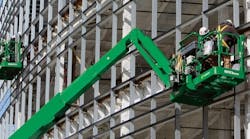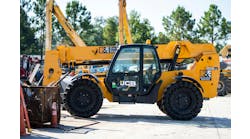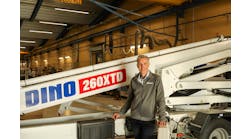ARA Projects Consistent Equipment Rental Growth Through 2019
The equipment rental industry will grow revenue 6.7 percent in the United States in 2016 and 2017, according to the latest forecast released by the American Rental Association. The industry will go on to growth of 6.2 percent in 2018 and 5.8 percent in 2019 to reach $48.7 billion, the projection says.
The growth rate is slightly more moderate than the previous two years, but the industry’s progress is consistently positive regardless of changes in the oil-and-gas industries, as well construction and other segments.
“The performance of the equipment rental industry since the recession has been very positive and as auxiliary industries recover and grow, we anticipate equipment rental revenue growth to meet the forecast of the next five years,” said ARA CEO and executive vice president Christine Wehrman. “The forecast also shows that many customers who have turned to renting equipment during and after the recession have seen the benefits and will continue to rent to control their costs. The secular shift to rental is here to stay.”
The analysis suggests that the ongoing rebound in real residential construction in 2015 will help fuel the growth in the construction and industrial equipment and general tool rental segments.
“A 2015-19 compound annual growth rate of 2.7 percent is projected for real total construction with real nonresidential growing 1 percent and real residential growing 5.7 percent,” according to the analysis provided by IHS Economics. “This will drive revenue growth in the construction and industrial segment and the general tool segment, which will average annual revenue increases of 6.5 percent and 6.7 percent respectively over the period.”
IHS predicts that the part and event rental will grow at a CAGR of 2.6 percent between 2015 and 2019, and total equipment rental revenue at a CAGR of 6.3 percent.
The short-term forecast for Canada is more modest for 2016, with expectations of 0.8 percent growth in equipment rental revenue to reach $4.98 billion, with a greater rebound of 5.7 percent in 2017, 6.3 percent in 2018, and 5.6 percent in 2019 to reach $5.9 billion.
“Lower oil prices will put some downward pressure on oil sands investment, but prices are expected to bottom out above the point at which oil sands become unprofitable and will rise steadily to over $80 a barrel by the end of 2018,” according to the analysis.






